
Ironing is an essential household chore, but over time, your iron can accumulate grime and sticky residue on its soleplate. This can affect its performance and make ironing a much more difficult task. One effective method to clean your iron and restore its smooth surface is by using a common household medicine – paracetamol.
Paracetamol, also known as acetaminophen, is a powerful compound that is commonly used to relieve pain and reduce fever. However, its chemical properties also make it an excellent cleaning agent for removing stubborn stains and grime. The active ingredient in paracetamol, known as acetaminophen, has the ability to break down and dissolve the residue that has accumulated on the iron’s soleplate.
To clean your iron with paracetamol, simply follow these steps:
Step 1: Unplug your iron and allow it to cool completely. This is important to avoid any accidents or burns while cleaning.
Step 2: Take a paracetamol tablet and place it on a heat-resistant surface.
Step 3: Set your iron to a low heat setting and rub the soleplate of the iron directly onto the paracetamol tablet. Apply gentle pressure and move the iron in a circular motion to ensure thorough cleaning.
Step 4: After a few minutes of rubbing, you will notice that the tablet begins to melt and form a yellowish residue. This is a sign that the paracetamol is effectively dissolving the grime on the soleplate.
Step 5: Using a clean cloth or sponge, wipe off the residue from the soleplate. You may need to repeat this process a few times to completely remove all the residue.
By following these simple steps, you can effectively clean your iron using paracetamol. This method is not only cost-effective but also safe for your iron. Remember to always practice caution and unplug your iron before cleaning. Now you can enjoy a smooth and hassle-free ironing experience!
Why Clean Your Iron?
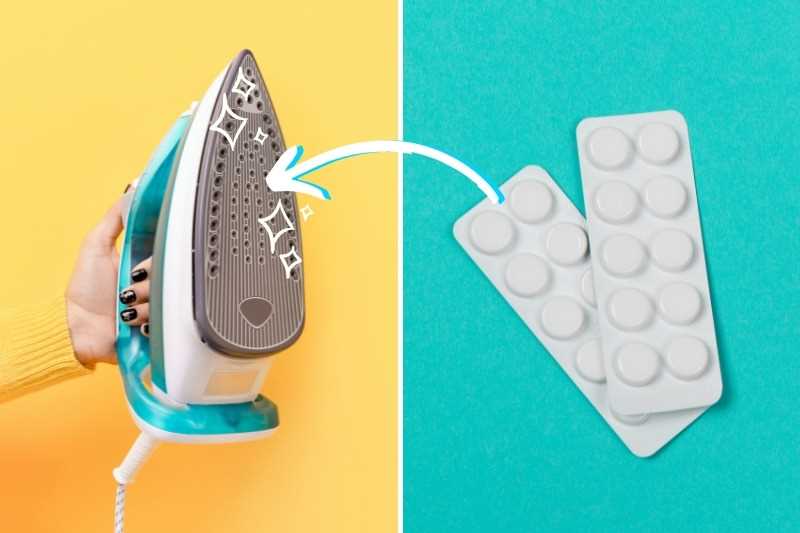
Cleaning your iron regularly is important to ensure optimal performance and to prolong its lifespan. With regular use, your iron can accumulate residue, mineral deposits, and other substances that can affect its ability to glide smoothly over fabrics and create steam. These build-ups can also stain your clothes and cause them to become dirty during the ironing process. Additionally, a dirty iron may have a harder time heating up evenly and maintaining the desired temperature, resulting in unevenly pressed garments.
Regularly cleaning your iron can have several benefits:
- Improved performance: By removing any build-ups, your iron will be able to glide smoothly over fabrics, ensuring crease-free results.
- Longer lifespan: The accumulation of residue and deposits can hinder the functionality of your iron, causing it to wear out faster. Cleaning it regularly can help extend its lifespan.
- Prevents staining: Dirty irons can transfer stains from the iron plate onto your clothes. Keeping your iron clean can prevent these stains from ruining your garments.
- Ensures even heating: Build-ups can interfere with the iron’s heating element, leading to uneven heat distribution. Regular cleaning helps maintain the iron’s ability to heat up evenly.
While there are various methods to clean an iron, using paracetamol is an effective and affordable option. It helps dissolve and remove the build-ups without damaging the iron’s surface.
Now that you understand the importance of cleaning your iron, let’s dive into the effective method of using paracetamol to clean it.
Benefits of keeping your iron clean

Keeping your iron clean is an essential part of maintaining its performance and ensuring its longevity. A clean iron not only helps you achieve optimal ironing results but also offers the following benefits:
- Efficient heating: Regular cleaning helps prevent the accumulation of mineral deposits and debris on the iron’s soleplate. This allows for better heat transfer and ensures that the iron reaches the desired temperature quickly and evenly, resulting in more efficient ironing.
- Prevention of stains: Accumulated dirt, grime, and mineral deposits on the iron’s soleplate can transfer onto your clothes, leaving unsightly stains. By keeping your iron clean, you can prevent these stains and maintain the appearance of your garments.
- Extended lifespan: Cleaning your iron regularly helps prevent the build-up of mineral deposits, which can clog the steam vents and affect the iron’s performance. By keeping the iron’s internal components clean, you can extend its lifespan and avoid the need for premature replacement.
- Improved steam performance: A clean iron ensures better steam distribution, allowing for easier removal of wrinkles and creases from fabrics. Clean steam vents and nozzles help produce a continuous and powerful steam output, making your ironing tasks quicker and more effective.
- Prevention of rust: Over time, the iron’s soleplate may develop small scratches or chipping, exposing the underlying metal. If left uncleaned, these areas can be susceptible to rust formation, which not only affects the iron’s appearance but can also transfer onto your clothes. Regular cleaning helps prevent rust and keeps your iron in pristine condition.
By incorporating regular cleaning into your iron care routine, you can enjoy the numerous benefits of a clean iron, including improved performance, extended lifespan, and wrinkle-free clothes.
Identifying the Problem
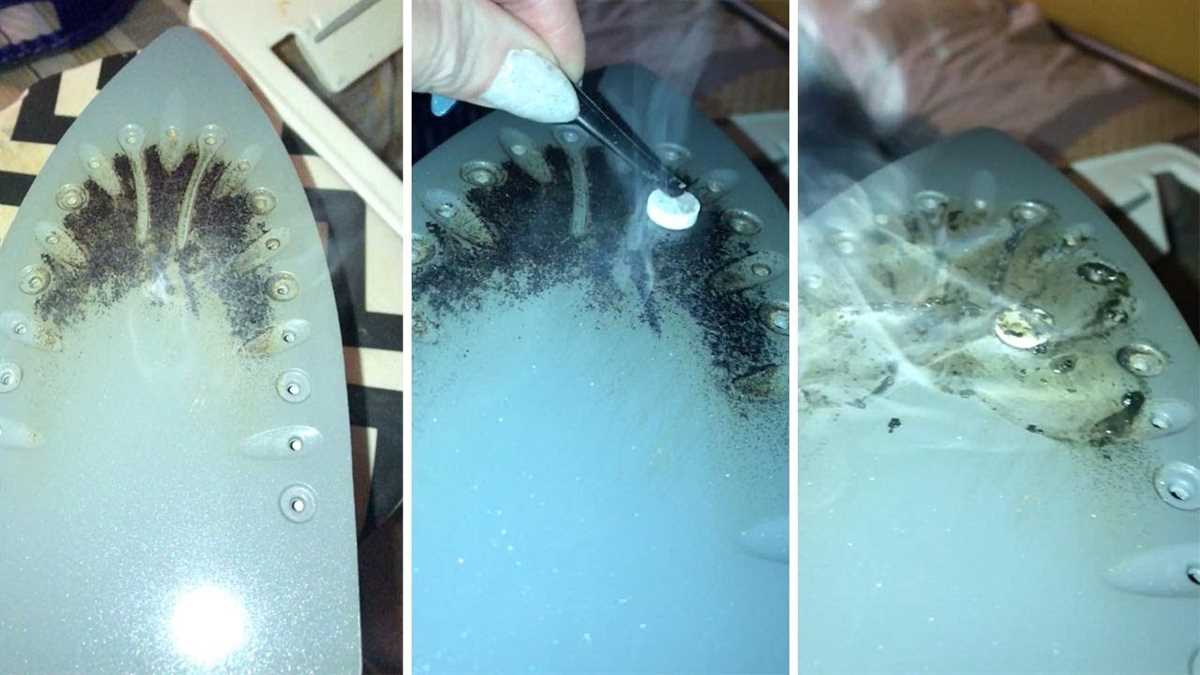
Before you can effectively clean an iron with paracetamol, it is important to first identify the problem you are trying to solve. There are several common issues that can occur with an iron that may require cleaning:
- Burnt-on residue: Over time, a build-up of burnt fabric or other materials can accumulate on the soleplate of the iron. This can cause the iron to stick to fabrics and leave undesirable marks.
- Mineral deposits: Hard water can often leave mineral deposits on the soleplate of the iron, which can affect its performance and cause it to become less efficient.
- Sticky substances: Occasionally, sticky substances such as adhesives or starch can find their way onto the soleplate and create a mess. This can affect the iron’s ability to glide smoothly over fabrics.
- Discoloration: Over time, the soleplate of the iron may become discolored due to various reasons, including exposure to high heat or chemical reactions with certain fabrics.
By identifying the specific issue you are dealing with, you can better determine the appropriate course of action to clean your iron effectively. Different problems may require different methods of cleaning or varying amounts of paracetamol to achieve the desired results. Once you have determined the problem, you can proceed with the appropriate solution.
Signs that your iron needs cleaning
If you notice any of the following signs, it may be an indication that your iron needs cleaning:
- Sticky residue: If your iron has a sticky residue on the soleplate, it is a sign that it needs cleaning. This residue can transfer onto your clothes and cause stains.
- Brown or black marks: Brown or black marks on the soleplate of your iron can be a result of burnt fabric or mineral deposits. These marks can also transfer onto your clothes.
- Poor steam performance: If your iron is not producing enough steam or the steam is not coming out evenly, it could be due to mineral buildup that is blocking the steam vents.
- Burning smell: If you notice a burning smell when you use your iron, it could be a sign that the soleplate has accumulated too much residue and it is getting heated up excessively.
- Inconsistent temperature: If the temperature of your iron is not consistent or it is not reaching the desired temperature, it could be due to mineral deposits affecting the heating element.
Regularly cleaning your iron is essential to maintain its performance and prevent damage to your clothes. If you notice any of these signs, it is recommended to clean your iron using effective methods, such as using paracetamol.
Using Paracetamol to Clean Your Iron
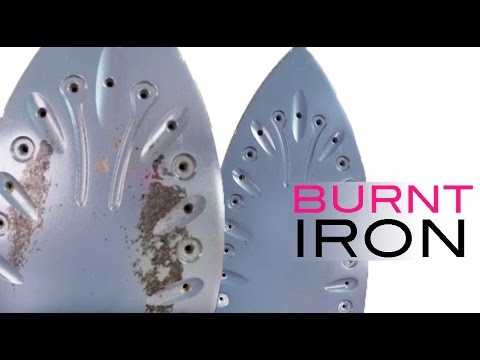
Introduction
If you’ve noticed that your iron is not gliding smoothly over fabrics or leaving residue on your clothes, it’s probably time to clean it. One effective method for cleaning an iron is using paracetamol, which can help remove stubborn stains and mineral deposits.
Materials Needed
- Paracetamol tablets
- Soft cloth
- Water
- Cotton swabs
Instructions
- Ensure that your iron is unplugged and cool before starting the cleaning process.
- Crush a few paracetamol tablets into a fine powder.
- Dampen a soft cloth with a little water.
- Dip the damp cloth into the powdered paracetamol, making sure to coat it evenly.
- Gently rub the cloth with the paracetamol powder on the surface of the iron. Focus particularly on areas with stains or mineral deposits.
- For smaller or hard-to-reach areas, use a cotton swab dipped in the paracetamol powder to clean.
- Once you have thoroughly cleaned the iron, wipe it down with a clean damp cloth to remove any residue.
- Plug in the iron and set it to the highest steam setting.
- Hold the iron above a sink or a towel and press the steam button. This will help flush out any remaining paracetamol residue from the steam vents.
- Finally, fill the iron with water and continue to steam for a few minutes to ensure that all the paracetamol residue has been removed.
Precautions
While using paracetamol to clean your iron is generally safe, it’s important to take some precautions:
- Read the instructions on the packaging of the paracetamol tablets to ensure there are no specific warnings or contraindications.
- Avoid inhaling the paracetamol powder or letting it come into contact with your eyes.
- Always clean your iron in a well-ventilated area to avoid inhaling any fumes.
Conclusion
Using paracetamol to clean your iron is a simple and effective method that can help restore its performance. By following the instructions and taking necessary precautions, you can ensure that your iron glides smoothly over fabrics, leaving them wrinkle-free and stain-free.
Step-by-step guide on cleaning your iron with paracetamol

Materials needed:
- A paracetamol tablet
- A clean cloth
- A bowl of water
Step 1: Preparation
Make sure your iron is unplugged and has completely cooled down before starting the cleaning process.
Step 2: Dissolving the paracetamol tablet
- Fill a bowl with warm water.
- Drop a paracetamol tablet into the bowl to dissolve. Allow it to sit for a few minutes until the tablet is completely dissolved.
Step 3: Applying the paracetamol solution
- Take a clean cloth and dip it into the bowl of paracetamol solution.
- Gently rub the cloth on the soleplate of the iron.
- Continue rubbing until any dirt or stains are removed.
Step 4: Cleaning the steam vents
- Unplug the iron and ensure it has cooled down.
- Take a cotton swab and dip it into the paracetamol solution.
- Carefully insert the cotton swab into each steam vent to remove any residue or buildup.
Step 5: Wiping off the residue
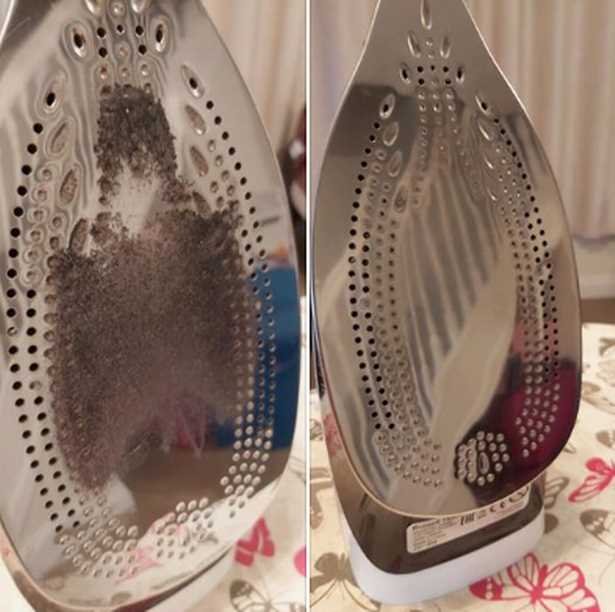
- Take a clean cloth and dip it into a bowl of clean water.
- Wipe off any residue or remaining paracetamol solution from the iron.
Step 6: Final cleaning
- Plug the iron in and set it to the lowest heat setting.
- Run the iron over a clean cloth to remove any remaining residue.
- Once the iron is clean, unplug it and allow it to cool down before storing.
Note: It is important to follow the manufacturer’s instructions for cleaning your specific iron model. This method is generally safe for most irons, but it’s always best to check the user manual or contact the manufacturer for any special instructions or precautions.
Alternative Methods
1. Vinegar Solution
A vinegar solution can also be used to clean an iron. Mix equal parts of white vinegar and water and pour the solution into the water reservoir of the iron. Turn on the iron to the highest setting and let it steam for about 5 minutes. Then, empty the reservoir and rinse it with clean water. Wipe the soleplate with a damp cloth to remove any residue.
2. Baking Soda Paste
Baking soda can be used to remove stubborn stains from the soleplate of an iron. Mix baking soda with a small amount of water to make a paste. Apply the paste onto the stained areas and let it sit for a few minutes. Then, scrub the soleplate with a soft brush or cloth. Rinse the soleplate with clean water to remove any residue.
3. Lemon Juice
Lemon juice can also be used to clean an iron. Cut a lemon in half and rub the cut side on the soleplate of the iron. The acidic properties of the lemon juice will help remove any residue or stains. Wipe the soleplate with a damp cloth to remove any remaining lemon juice.
4. Toothpaste
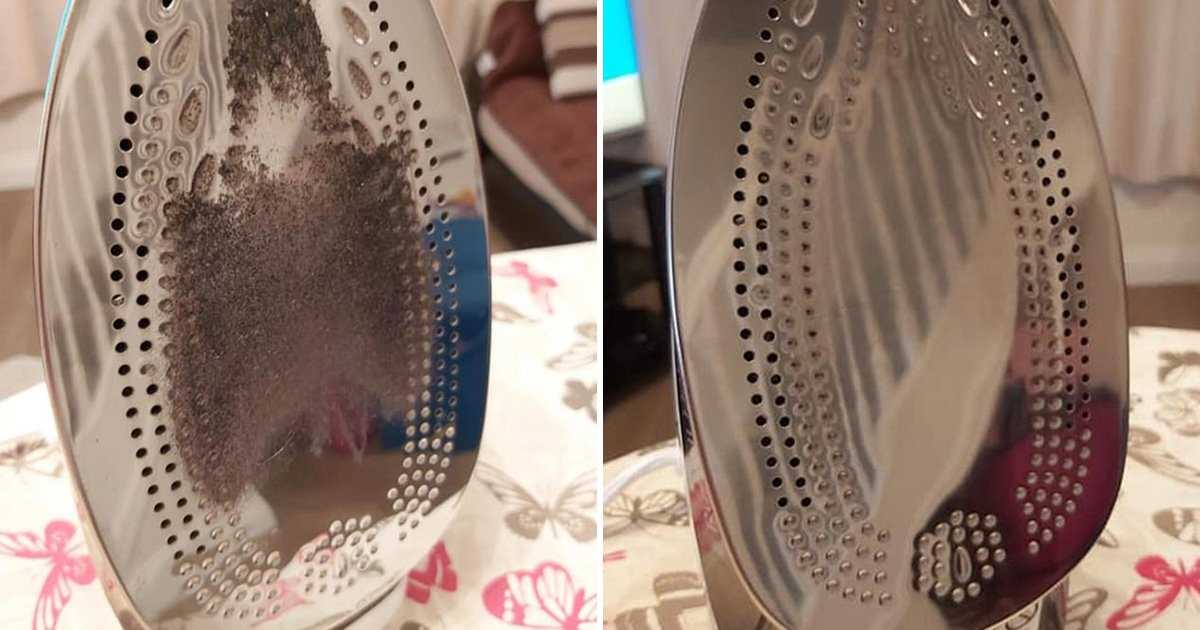
Toothpaste can be effective in removing residue from the soleplate of an iron. Apply a small amount of toothpaste onto a soft cloth and rub it onto the soleplate. Scrub the soleplate gently to remove any residue or stains. Rinse the soleplate with clean water to remove any remaining toothpaste.
5. Salt

Salt can be used to remove grease stains from the soleplate of an iron. Sprinkle a small amount of salt onto a damp cloth and scrub the soleplate with it. The abrasiveness of the salt will help remove any grease stains. Rinse the soleplate with clean water to remove any remaining salt.
| Method | Pros | Cons |
|---|---|---|
| Vinegar Solution | – Easy to make – Effective in removing mineral deposits |
– May leave a vinegar odor – Requires rinsing |
| Baking Soda Paste | – Natural and non-toxic – Easily accessible ingredient |
– Requires scrubbing – May require multiple applications |
| Lemon Juice | – Natural and acidic – Effective in removing stains |
– May leave a citrus smell – Requires wiping |
| Toothpaste | – Easily available – Mild abrasive properties |
– May require rinsing – Not suitable for non-stick soleplates |
| Salt | – Abrasive properties – Effective against grease stains |
– May require scrubbing – May not be effective for other stains |
FAQ
What is the article about?
The article is about effective methods for cleaning an iron with paracetamol.
Why would I need to clean my iron with paracetamol?
You may need to clean your iron with paracetamol if it has become dirty and sticky due to the build-up of starch and other substances from ironing clothes.
How does paracetamol help in cleaning an iron?
Paracetamol contains citric acid, which helps in breaking down the residue on the iron’s surface and making it easier to clean.
Are there any other methods of cleaning an iron?
Yes, there are other methods such as using vinegar, baking soda, or commercial iron cleaners. However, cleaning with paracetamol is an effective and affordable alternative.












